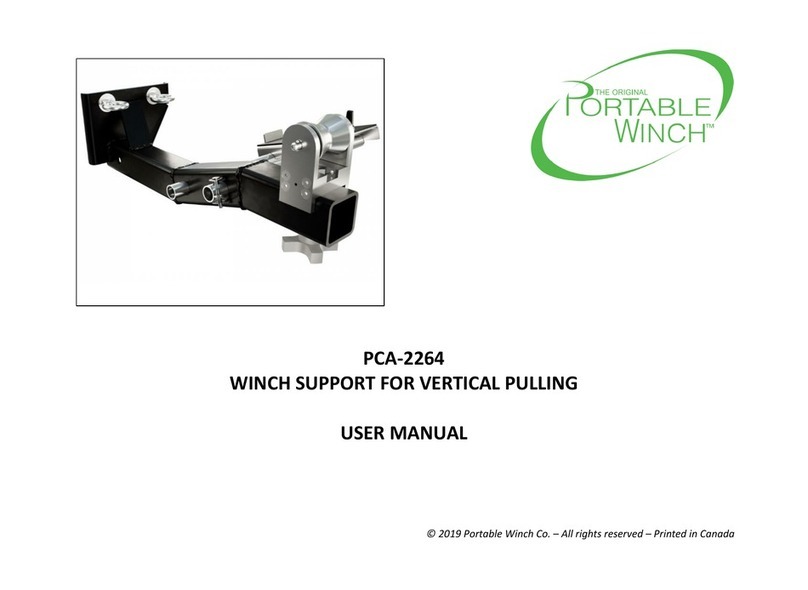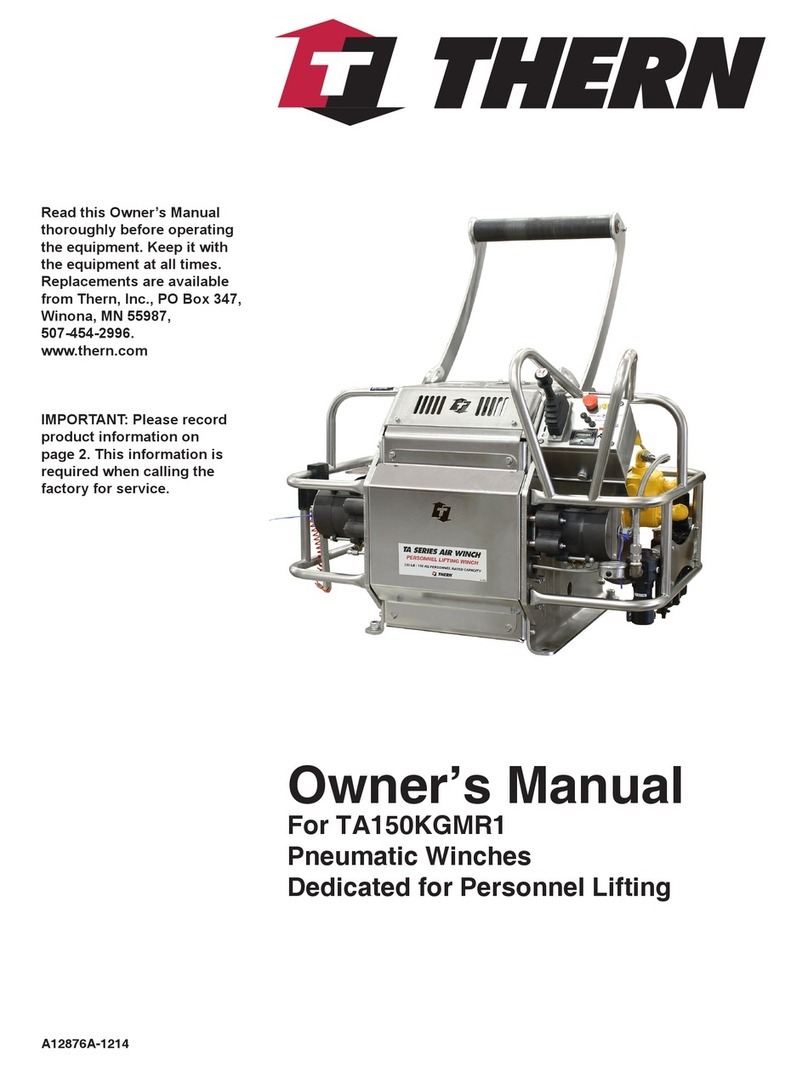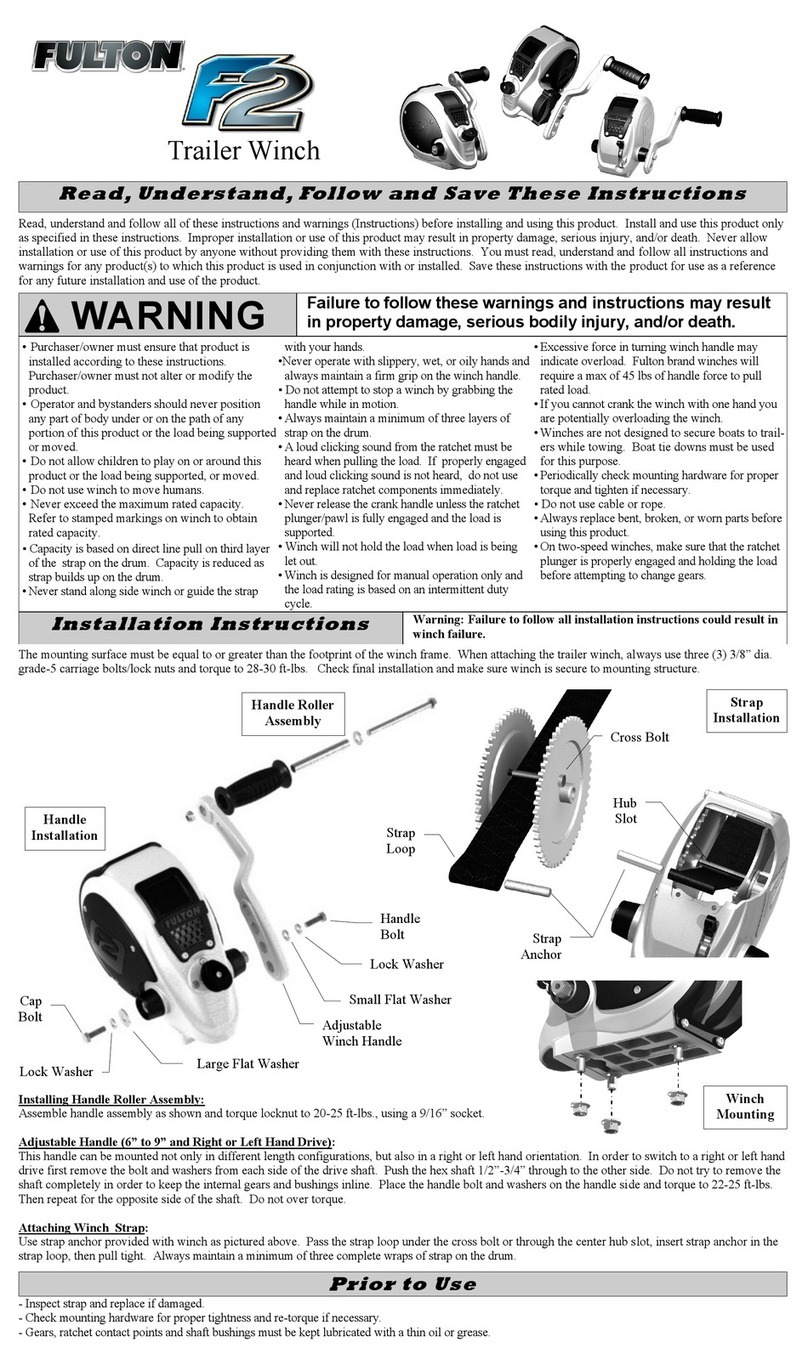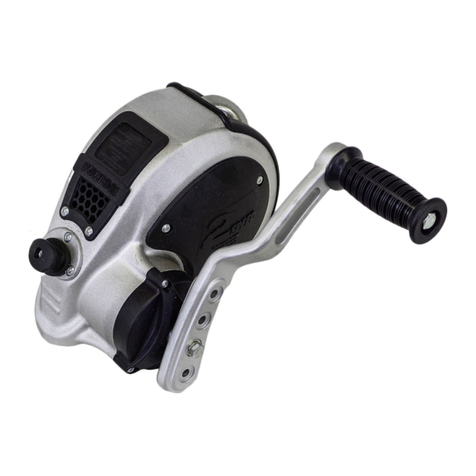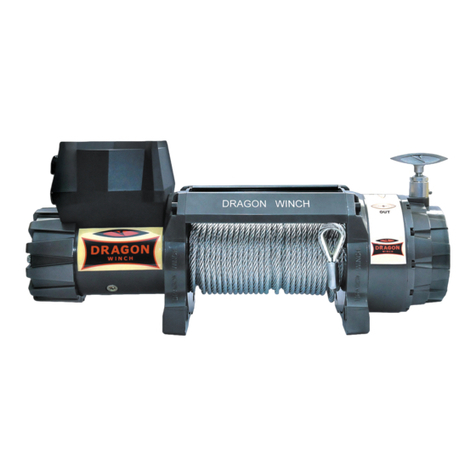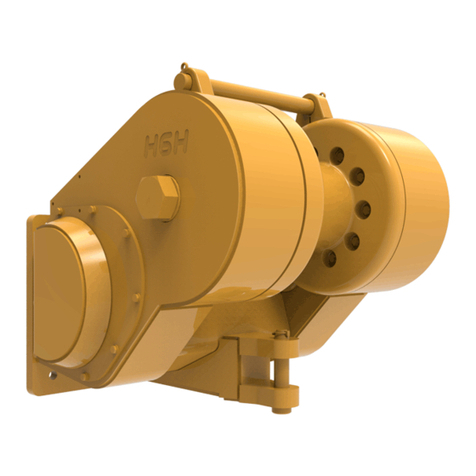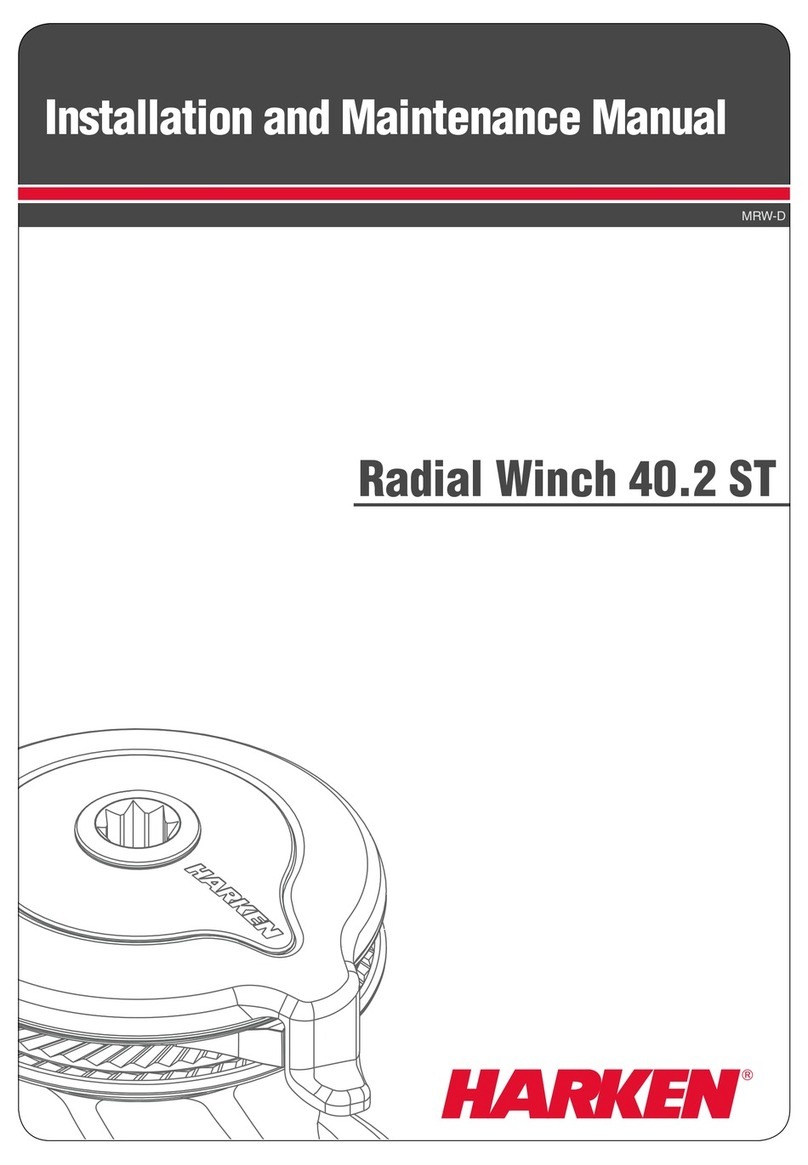Gemtor Sentry RS3 Series User manual

Gemtor, Inc. • One Johnson Avenue • Matawan, NJ 07747
Phone: 732-583-6200 • 800-405-9048 • Fax: 732-290-9391
Web: www.gemtor.com • Email: sales.info@gemtor.com
OWNER'S MANUAL
Installation, Operating, Inspection and Maintenance Instructions
Sentry 3-Function Fall Arrest/Retrieval/Lowering Device
Model #’s: RS3-50
RS3-50S
RS3-50T
RS3-100
RS3-100S
RS3-100T
Warning
You must read and fully understand all instructions, or have all
instructions explained to you, before attempting to use this device.
Equipment must not be installed, operated or inspected by anyone
who does not understand this Owner's Manual. Failure to observe
these instructions could result in serious injury or death. Careless or
improper use of this equipment can result in serious injury or death.
Training and instruction review should be repeated at regular
intervals. If you have any questions regarding these instructions or
need additional copies, call Gemtor toll free at 800-405-9048.
IMPORTANT: THESE INSTRUCTIONS SHOULD BE KEPT
WITH THE DEVICE AT ALL TIMES.

Rev. 9-20
© Copyright 1995-2020 Gemtor, Inc.
Page 2 of 8
IMPORTANT INFORMATION:
Purchased from (Distributor): ______________________________________
Address: ______________________________________
______________________________________
City: _________________ State______ Zip_______
Purchase Date: _________________
Model Number: _________________
Serial Number: _________________
Property of:
_______________________________________
_______________________________________
_______________________________________
_______________________________________
_______________________________________
Keep this information for future reference.
IMPORTANT: Return registration card immediately

Rev. 9-20
© Copyright 1995-2020 Gemtor, Inc.
Page 3 of 8
DESCRIPTION:
Gemtor Sentry RS3 series systems are fully integrated three (3) function devices that blend
fall arrest, retrieval and lowering capabilities into one convenient unit. The Sentry provides
the ability to perform rescue operations in OSHA defined Confined Spaces, i.e. manholes,
tanks, vats, etc.
Care should be taken to insure that all equipment will be clear of electrical hazards and that
proper ventilation has been provided in the work area before the worker descends into the
confined space. It is recommended that the worker wear a full-body harness that complies
with OSHA, so that an injured worker can be winched up and retrieved through an opening
without having another person enter the confined workspace.
Personnel using the Sentry System and personnel that may be required to perform a rescue
operation must be instructed in the correct use of the system. All operators must read and
understand all instructions pertaining to the use of the Sentry System and must be trained in
its proper use.
SPECIFICATIONS:
RS3-50
RS3-50S
RS3-50T
RS3-100
RS3-100S
RS3-100T
Maximum Work Load
310 lbs.
310 lbs.
310 lbs.
310 lbs.
310 lbs.
310 lbs.
Cable Length
50'
50'
50'
100'
100'
100'
Cable Diameter
3/16"
3/16"
3/16"
3/16"
3/16"
3/16"
Lifeline Breaking Strength
Galvanized
Stainless Steel
Technora
4200 lbs.
N/A
N/A
N/A
3700 lbs.
N/A
N/A
N/A
5600 lbs.
4200 lbs.
N/A
N/A
N/A
3700 lbs.
N/A
N/A
N/A
5600 lbs.
Brake Activation Speed
4.5 ft./sec.
4.5 ft./sec.
4.5 ft./sec.
4.5 ft./sec.
4.5 ft./sec.
4.5 ft./sec.
Weight
45 lbs.
45 lbs.
45 lbs.
65 lbs.
65 lbs.
65 lbs.
TRAINING:
From OSHA 1910.146 (see The Federal Register for the full text)
(g) Training.
(1) The employer shall provide training so that all employees whose work is regulated by this
section acquire the understanding, knowledge, and skills necessary for the safe performance
of the duties assigned under this section.
(2) Training shall be provided to each affected employee:
(i) Before the employee is first assigned duties under this section;
(ii) Before there is a change in assigned duties;
(iii) Whenever there is a change in permit space operations that presents a hazard about
which an employee has not previously been trained;
(iv) Whenever the employer has reason to believe either that there are deviations from the
permit space entry procedures required by paragraph (d)(3) of this section or that there are
inadequacies in the employee's knowledge or use of these procedures.
(3) The training shall establish employee proficiency in the duties required by this section
and shall introduce new or revised procedures, as necessary, for compliance with this
section.
(4) The employer shall certify that the training required by paragraphs (g)(1) through (g)(3)
of this section has been accomplished. The certification shall contain each employee's
name, the signatures or initials of the trainers, and the dates of training. The certification
shall be available for inspection by employees and their authorized representatives.

Rev. 9-20
© Copyright 1995-2020 Gemtor, Inc.
Page 4 of 8
INSTALLATION:
Mounting to Tripod:
The Sentry device is furnishedwith a mounting bracket (1) and locking pins(2) for attachment
to a Gemtor tripod. The device can be mounted to any leg of the tripod; position the device
on the tripod leg and align the holes in the mounting bracket with the holes in the tripod leg.
Secure device with locking pins. Check that pin bearings are completely through bracket and
are fully extended. Insert locking clips in holes at end of locking pins. Extend cable out of
housing, open pulley by sliding sides in opposite directions, place cable over pulley sheave
and close pulley (7). Attach pulley to snaphook on the head of the tripod. Attach locking
swivel snaphook (5) to back D-ring of appropriate full-body harness.
Mounting to Quadpod or Davit:
The Sentry device isfurnished with amounting bracket (1)and locking pins (2)for attachment
to a Gemtor Quadpod or Davit. The device can be mounted to either of the mounting
positions on the quadpod/davit boom; position the device on the boom’s mounting block and
align the mounting holes on the bracket and block. Secure device with locking pins. Check
that pin bearings are completely through bracket and are fully extended. Insert locking clips
in holes at end of locking pins. Extend cable out of housing, remove cable retaining pin at
end of boom, place cable over pulley sheave and reinsert pin. Attach locking swivel
snaphook (5) to back D-ring of appropriate full-body harness.
INSPECTION:
STRESS INDICATOR
Your retractable lifeline may have been supplied with one of the two styles of stress
indicators. It is located at the end of the lifeline’s cable or rope, as an integral part of
(shown) or just above the locking swivel snaphook (figure 3, page 7). When new, the
stress indicator appears as shown in figure 1. If subjected to a fall arrest impact (activated),
it will appear as shown in figure 2. DO NOT USE if the stress indicator has been activated.
BEFORE EACH USE
inspect the entire fall arrest unit for any indication of damage, wear or malfunction to include,
but not limited to, worn cable or damaged locking snaphook. Remove from service
immediately if the unit is damaged, has been subjected to a severe fall, does not pass
inspection, the stress indicator’s (figure 3, (6), page 7) red area is visible or if the unit has
not been inspected by the Gemtor factory within the last 12 months.
DO NOT attempt to adjust, repair or modify Sentry self-retracting lifelines/retrieval winches;
for prompt repair, reconditioning or re-certification, return the unit to Gemtor, Inc., prepaid.
Inspect work area:
Inspect and clear the vicinity around the work area of debris and other materials that could
cause injuries or interfere with the operation of the device.
Check cable:
Pull all cable out of housing and allow to retract slowly under light tension. While the cable
is retracting, check for cuts, kinks, broken strands, excessive wear, foreign substances or
other damage.
Figure 1 (New)
Figure 2 (Activated)
Space

Rev. 9-20
© Copyright 1995-2020 Gemtor, Inc.
Page 5 of 8
INSPECTION (CONT.):
Check locking mechanism:
Pull approximately two (2) feet of cable out of the housing and give it a quick, hard tug.
The cable should lock.
Check cable retraction before each use:
Pull approximately four (4) feet of cable out of the housing and allow to retract; maintain
slight tension on cable. The cable should retract smoothly and completely. Do not allow
cable to retract freely.
Inspect snaphooks and connecting hardware:
Snaphooks and connecting hardware shall not be distorted or have any sharp edges,
burrs, cracks, worn parts or corrosion. The snaphook keeper spring shall provide tension
to close the keeper in the locked position.
WARNINGS:
The RS3-50 is an emergency safety and rescue device and IS NOT DESIGNED TO BE
USED AS A MATERIAL HANDLING DEVICE.
DO NOT USE IF:
•The device appears to be damaged.
•The cable is worn or partially cut.
•The locking snap hook does not function properly.
•The cable does not retract properly.
•The device does not lock and stop the cable.
•The unit has arrested a severe fall.
•The stress indicator reads DO NOT USE.
•The winch does not function correctly.
•The unit has not inspected by the factory within the last 12 months
•DO NOT attempt to adjust, repair or modify Sentry Self-Retracting Lifelines; for prompt
repair or reconditioning, return the unit to Gemtor, Inc., prepaid.
•NEVER ALLOW CABLE TO RETRACT FREELY.
•DO NOT use steel cable near electrical lines or equipment.
•DO NOT attach more that one worker to the device.
•DO NOT use for lifting or towing except as described.
•DO NOT use as a work-positioning device.
•DO NOT attach anything to the snaphook at the end of the retractable lifeline cable to
extend its length beyond its designed length.
•NEVER clamp off or stand on cable nor allow cable to become slack during use.
•NEVER allow cable to cross under or wrap around the legs, arms, neck or torso of the
user or other workers.
•NEVER work above the anchor point.
•ALWAYS work directly under the anchor point. Worker must be vertically in line with
device to avoid swing-fall injuries (pendulum effect).
•ALWAYS rig to allow a minimum of 3 ft. clearance to the next lower level or obstructions
below.
OPERATING INSTRUCTIONS (SEE FIGURE 3, PAGE 7):
Retractable Lifeline Operation (for fall arrest):
1. Locate the knob (3) under the handle (4) on the winch side. Turn the knob
counterclockwise 1/4 turn. The knob will spring outward.
2. Secure the handle (4) to the mounting bracket (1). Note: handle must be in position 1.

Rev. 9-20
© Copyright 1995-2020 Gemtor, Inc.
Page 6 of 8
OPERATING INSTRUCTIONS (CONT.):
3. The cable should be free to pull out and retract.
4. The braking mechanism can be checked by pulling out two (2) feet of cable and quickly
pulling outward on the cable. The brake should engage and hold until the tension is
released on the cable. Caution: Gloves should be worn when making this test.
5. Always maintain a light tension on the cable as it retracts into the housing.
Winch System Operation (for emergency retrieval or rescue):
1. Unscrew the crank handle (4) from the mounting bracket and slide it outward. When
demonstrating or testing be sure to pull out several feet of cable and hold it in position
to eliminate possible damage to the device.
2. The Handle has two positions, Position 1 requires more force but allows for faster
retrieval, position 2 requiresless forcebut may requiremore time to retrieve the worker.
To switch between positions, unscrew the lock nut in the center of the handle (4), move
the handle to the desired position and reinstall the lock nut.
3. Locate the knob (3) under the handle (4) on the winch side. Push the knob in and turn
clockwise 1/4 turn to lock the unit in the retrieval mode. The winch should now be
engaged.
4. While maintaining outward tension on the cable, rotate the winch handle clockwise to
crank the cable back into the housing.
5. To extend the cable for lowering while in the retrieval mode (winching), crank
counterclockwise. When cranking the cable out, a minimum of 75 pounds must be on
the cable.
6. To extend the cable quickly without load, set the selection knob to the retractable
lifeline position, pull out the required amount of cable, then set the selector knob to the
retrieval position for recovery.
This unit is designed as backup fall protection when:
•A worker ascends or descends a ladder in a confined space.
•A worker is raised or lowered in a confined space with a separate winch.
Never use this device in retrieval mode for raising or lowering of a worker without an
independent fall protection system.
CAUTION: Do not crank all of the cable back into the housing or through the pulley (7). This
will cause excessive tension on the cable and may cause equipment damage or personal
injury. Should there be excessive tension, attach a minimum weight of 75 pounds to the
cable and crank the handle counterclockwise until the pressure is released. When the job is
completed, screw the winch handle into the bracket; remove the device from the tripod and
store/transport device in its carrying bag.
Equipment must be inspected before each use; if bent, damaged or if parts have been
substituted DO NOT USE.Return to Gemtor for reconditioning or repair.
IMPORTANT: This device should be returned to our facilities on an annual basis for physical
inspection and re-certification or whenever subjected to fall arrest forces (impact loaded).
Only original Gemtor replacement parts are approved for use in this device.
IF YOU HAVE ANY QUESTIONS CONCERNING THE CORRECT
USAGE OF THIS OR ANY GEMTOR PRODUCT, DO NOT USE, CALL
(TOLL FREE) 1-800-405-9048
Do not try to adjust, repair or modify Gemtor self-retracting lifelines/retrieval winches; for
prompt service, please contact Gemtor, Inc at the address on page 8 of these instructions.

Rev. 9-20
© Copyright 1995-2020 Gemtor, Inc.
Page 7 of 8
Handle Position 1
Handle Position 2
1. Mounting bracket
2. Locking pins
3. Mode selection knob
4. Winch handle
5. Swivel locking snaphook
6. Stress indicator
7. Model # 51C split sheave pulley (not included)
FIGURE 3

Rev. 9-20
© Copyright 1995-2020 Gemtor, Inc.
Page 8 of 8
INSPECTION LOG:
NOTES:
______________________________________________________
______________________________________________________
______________________________________________________
______________________________________________________
______________________________________________________
______________________________________________________
GEMTOR, INC.
One JOHNSON AVENUE
MATAWAN, NJ 07747
800-405-9048 • 732-583-6200
732-290-9391 (fax)
www.gemtor.com
This manual suits for next models
6
Table of contents


